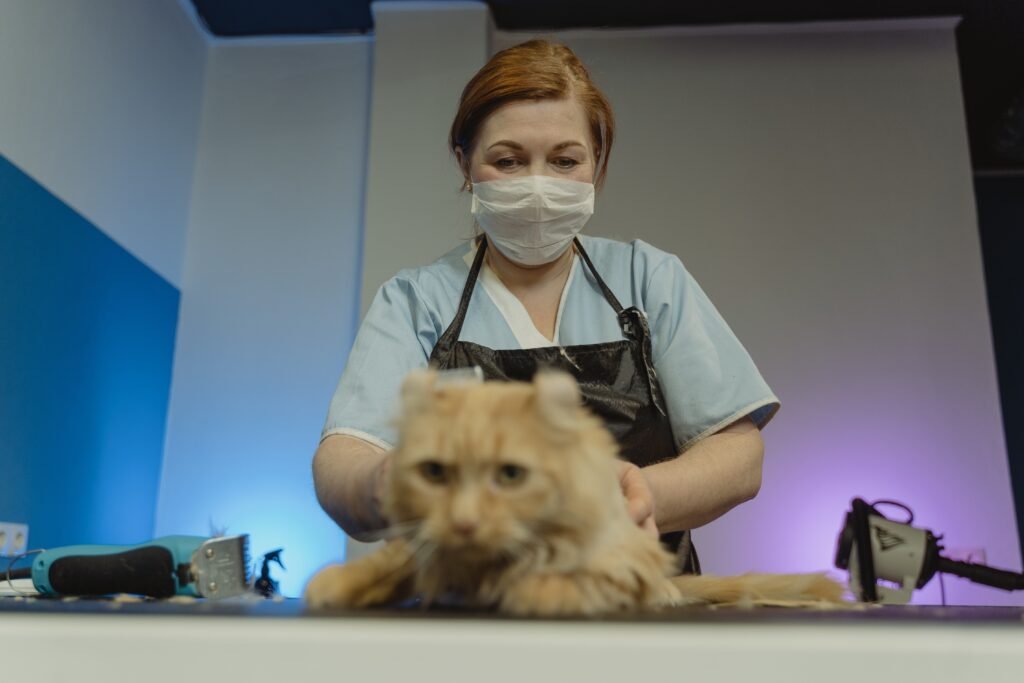How to Care for a Pet Cat?
With their playful natures, affectionate behavior, and attractive faces, cats can be the ideal pet. But, despite the fact cats are not maintenance-free! To keep your cat healthy and pleased, you need to know how to care for and provide the best possible life for your new favorite friend.
Three ways to care
1. Housetraining Your Cat
2. Feeding Your Cat
3. Keeping Your Cat Healthy
1) Housetraining your cat.
Encourage the cat to use a litter box.
Locate the litter box in a peaceful spot where the cat won’t be annoyed by people, dogs, or other noises.
Keep the box clean.
To clean the litter box, use a scoop to clean the box weekly or twice a week. For indoor cats, you can also use fragrance litter, which costs slightly more than non-fragrant litter.
Quantity of litter box.
Provide litter boxes 2 and 3 if you have more than one cat. It will help if you place boxes in various areas of the home. It may vary according to the number of cats you have.
Litter brands.
Do not switch litter brands because cats don’t like rash changes.
Please provide them with a scratching place.
Provide the cat with scratching places. Scratching is a normal, instinctive cat behavior. Cats need to scratch. They do it to express emotions like excitement or stress, to mark objects with their scent (they have scent glands in their paws), to remove the dead part of their nails, and often, to get a good stretch.

2) Feeding your cat.
Consider your cat’s age.
- Kittens up to six months should be fed three times a day.
- You should feed your cat twice a day from six to about one year old.
- Adult cats (one year or older) and seniors can be fed either once or twice a day.
Consider your cat’s health.
If your cat has a disease, treat it first before changing its feeding schedule. If the condition is treatable, you should be able to return to a regular feeding schedule once your cat is healthy.
Feeding time.
Pick a time that is convenient for you and your family. If you’re feeding your cat two or three times a day, pick the times that are easiest for you and do your best to stick to this schedule.
Cats remember feeding time.
Accept that your cat will “remind” you if you don’t feed it on time. Remember, your cat will get used to the schedule you choose and may “remind” you when it’s mealtime.
3) Keeping your cat healthy.
Give your cat fresh water, and the best brands of food, plus groom your cat regularly and visit the Vet.
Freshwater keeps your pet hydrated.
Place a bowl of water with the food of the cat so that the cat drinks fresh water after finishing the meal. Provide fresh water for your cat. At the start of the day, dump old water and refill it with new fresh water.
Best brand food.
Search for the best brand food for your cat according to cat breed, age, and nature. Then stick to that brand because cats don’t like sudden changes. You can also consult a vet for the best food selection for your cat.
Groom your cat regularly.
Cats with long hair need to be groomed regularly compared to short hair cats. Comb the fur and check their nails regularly. Shower your cat once a week, and use quality shampoo, especially for cats.
Visit the Vet.
Vets are specially taught to look for problems with cat teeth that you might not see. Some vets will brush your cat’s teeth as a regular checkup routine. Must visit the Vet regularly even if the cat’s vaccination is over.

Don’t feed dry food.
Dry cat foods can lead to diabetes. Wet cat foods have higher lean protein, which keeps your cat healthy. Wet cat foods will keep your cat hydrated better than dry foods.
Warnings
Dog food:
Do not feed cats with dog food. It is much more harmful than you think.
Food consultant.
Consult your Vet if you are having trouble figuring out a feeding schedule that works for you and your cat.
Avoid overfeeding your pet cat.
Cats will get fatter if they’re regularly overfed. This means they get less mobile, more passive, and less active and can eventually get sick. Obese cats can get liver or heart disease or diabetes. So, ensure you’re feeding your cat the right amount of food throughout the day.
Allergies.
Don’t let the cat if you have allergies.
Aggressive cat.
If the cat looks aggressive, stay away, as it can cause wounds through bites and scratches. Cats that are friendly to adults are not always pleasant to youngsters. Be especially mindful that children do not get their faces too close to a cat.
Look into “howtothing.net” detailed pages about care for dogs, fish, birds, and pets to get more information.
